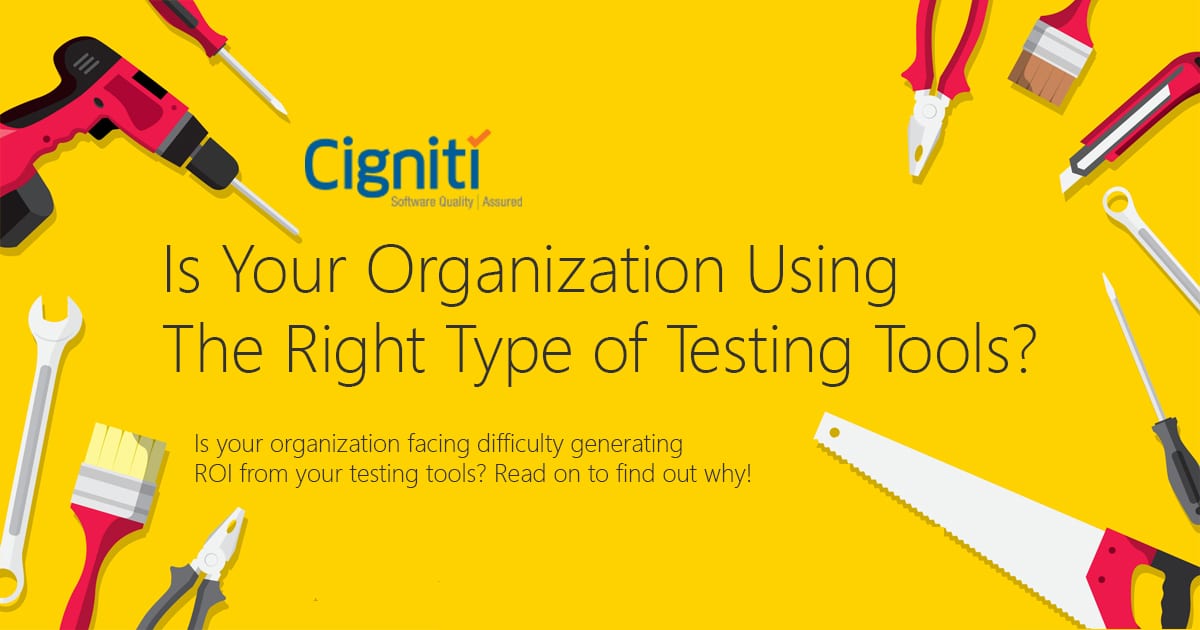How to Empower Enterprise Agility with Test Automation
|
Listen on the go!
|
Continuous attention to technical excellence and good design enhances agility.
This mantra for enterprise agility has always been publicly available as one of the twelve principles on which the Agile manifesto was defined. The question is, despite it being in existence for almost two decades, why aren’t more enterprises following these principles? Negligence, lack of awareness, or maybe they simply do not care? Whatever the reason may have been, it has resulted in a failed Agile adoption – pushing enterprises spiraling down the ladder of quality and technical debt.
Agile, both etymologically and functionally, means speed. Traditional software development methodologies just cannot keep up with the pace at which the IT landscape is evolving. Being bombarded with innovations left, right, and center, the industry cannot afford to sit and wait around till their legacy methods complete the designated cycle. The result will come too late and will be too little compared to what is needed.
Agile manifesto promotes quality over quantity. Working software is the primary measure of progress. If even after such a long wait, the product delivered at the end of the cycle is not at par with the desired specifications, then the whole cycle is a total waste, measuring zero on the progress scale. This is the primary reason why the need for a more robust, efficient, and fast development methodology arose – to eradicate wastage and improve productivity. Agile adoption is not only about smaller iterations and faster deployments but also about offering a sustainable environment to motivate individuals to deliver valuable software continuously.
“Value” and “Customer Satisfaction” are the core necessities that Agile fulfills. However, an enterprise cannot meet these needs by only shortening its production cycles. It requires a continuous testing and improvement mechanism integrated into the very process to eliminate redundancies and assure quality. As per a report, while 88% of the surveyed organizations have adopted Agile, only about 26% of them have a broad test automation strategy in place. This is where the majority of enterprises are lagging.
Manual testing defeats the purpose of Agile adoption
Testing is a laborious and time-consuming task if performed manually. Picture this – each agile sprint should ideally span across only a few weeks and continuous testing is critical for a successful agile cycle. If a developer keeps sending each code for manual testing before moving on to the next step, it will be absolutely infeasible to stay within the designated timeframe. In fact, such practice will stretch one sprint for years, thus, taking the enterprise back into the rut of waterfall and other legacy methodologies.
Quality assurance is critical for effective sprints
“Quality is the ally of schedule and cost, not their adversary. If we have to sacrifice quality to meet schedule, it’s because we are doing the job wrong from the very beginning.” – James A. Ward
As enterprises started taking the agile route for their software development processes, they miscalculated the value of quality assurance and testing. Faster deployments, under no circumstances, can compensate for a botchy and buggy software. While it is imperative that the duration of an average SDLC is reduced and new features are deployed with every sprint, it is equally important to ensure that the features perform the way they are supposed to.
With Agile adoption, two rather critical things took the back seat in an enterprise’s software development wagon – Planning and Quality Assurance. Planning in Agile is as important as the actual execution, but that is a discussion for another day. Just like in legacy methodologies, enterprises shifted the responsibility of detecting errors in software to the end-users – which is anything but ideal. The ultimate goal for any business is revenues, which is directly linked to how satisfied the customers are. When customers are presented with a non-intuitive, inoperable application, they will not think twice before switching to the competitor’s products.
For each sprint to be truly effective and meaningful, quality assurance needs to be omnipresent, deeply integrated at every step. Having QA established right from the beginning helps identify and rectify defects in real-time.
Test automation enhances the productivity of each cycle
Manual testing is tedious and requires time, which Agile sprints cannot spare. ‘No Testing’ is not an option. To get out of this flummoxing situation, test automation is the solution. By automating iterative, standard testing processes, enterprises can save significant time without compromising the quality. With test automation, codes can be tested simultaneously to the development. This enables Agile teams to detect defects early and exercise faster recovery. Automation not only enhances the speed of the sprint by obliterating time-consuming tasks but also reduces the overall testing efforts while ensuring that the developed code meets the desired requirements.
Challenges of incorporating automation testing across the industry
An effective test plan requires automation testing to be incorporated. It does seem to be a huge task considering that an average test plan has more than 2,000 test cases. When incorporating automated testing, there are factors that give even the most successful Fortune 500 companies stop short in their tracks. For one, the cost of implementing such a plan, in terms of purchasing software and making sure that you have the right staff in place, can be really high. This is mitigated by the fact that on comparing these costs per thousands of test cases you are sure to run, the price per test drops.
The next challenge is in deciding which test cases to automate. In many situations, enterprises start by automating the test cases that reduce testing times, thus freeing up the developers and tester to do other tasks. When these criteria are established upfront, the teams can make consistent and logical decisions about which cases to test and when. This all adds up to reducing the test cycle time while simplifying decision making – the two most time-consuming aspects of Agile sprint times.
Tools facilitating Agile acceleration
After deciding what to automate in an Agile process, the next step involves selection of the right tools to ensure the success of a test automation project.
Start with an IDE (Eclipse, IntelliJ) that will make it easy for automation engineers to create, update, and deploy tests into whichever environment they choose.
Once IDE is selected, testers will need a cloud of web and mobile devices to connect to. This will ensure that test can be performed on any combination of device and operating system. A web and mobile device cloud can reside on an organization’s premises and within their firewall for extra security.
Another option that eliminates the need to purchase and maintain any hardware is a SaaS Cloud. In this cloud, developers and testers connect to a cloud of devices located internationally in different ISO-27001 secured data centers.
Finally, a test analytics system is needed for deriving real-time results from the test executions. This gives teams the ability to not only see which tests have passed and failed, but also to drill down into specific instances in order to get quality insights and drive improvements.
Best test automation practices for Agile enterprises
The ultimate goal of Agile testing is to shorten the development cycle. Aided by test automation, the entire process is made more effective and efficient. In order to be able to improve an app’s quality and speed up delivery, here are a few best practices to adopt:
Code Coverage – All of the code blocks that make up an application must be tested. Even if each function is not tested one by one, it will still be possible to have each block of code covered as you test. This is especially true for regression testing where each new version must be tested so as not to break the previous one.
Automation on the System Level – Agile workflow methods depend on team input. The average UI goes through many different versions, which makes test automation time-consuming. It is important that test automation starts on the system and service level to increase coverage and minimize maintenance.
Testing-Driven Development – Development and testing teams need to work together to make sure that the tests being written truly make up the foundation for the source code being tested.
Putting Automation before Manual Testing – Even though it is strongly advocated to place automated testing at the forefront of app development cycles, there is merit to having testers confirm app stability by giving each release a manual run-through for an added layer of testing support.
Choosing Tools – When deploying an Agile testing plan, choosing the right tools is pivotal. Even that decision can be a difficult one as there are a lot of factors to consider such as integration capability, installations, cost, maintenance, and test environment compatibility.
Test Automation Code Verification – Itis not just the app code that needs testing, even the tests need to be tested too. The nature of Agile and its emphasis on speed means that tests need to be flawless to launch a flawless product.
Code Sharing – In an effort to make the Agile workflow as efficient as possible automation code must be shared across teams as well. The idea is to manage the varying perspectives across different teams to make sure that tests are as reliable as the code they are testing is.
To Sum Up
It is not feasible to perform Continous Testing without automation. An automation-driven ‘test everywhere’ strategy is necessary to drive agile SDLCs to their optimum conclusion. This requires the right mix of automation tools and a business-driven strategy.
Experitest’s proprietary platform, SeeTest, facilitates seamless automated browser & mobile testing, and yields maximum test coverage with high accuracy.
Cigniti works closely with Experitest to serve test automation needs of our clients.
This blog reflects Cigniti and Experitest’s joint thought leadership. Stay tuned for a Cigniti-Experitest joint webinar where our leaders will dive into the depth of test automation challenges that organizations face today.





Leave a Reply